ROSKOSMOS: to find life on Jupiter
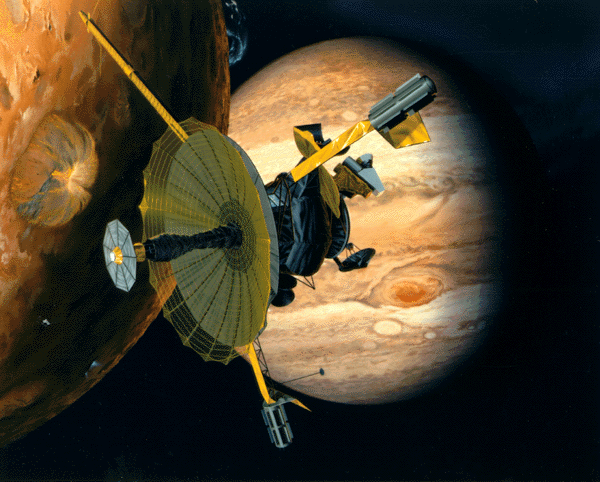
The probe floats in an icy void. Three years have passed since its launch at Baikonur, and a long road stretched a billion kilometers behind. The asteroid belt was safely crossed, fragile instruments withstood the brutal cold of world space. And ahead? Terrible electromagnetic storms in Jupiter’s orbit, deadly radiation and complex landing on the surface of Ganymede - the largest of the satellites of the giant planet.
According to the modern hypothesis, under the surface of Ganymede lies a huge warm ocean, which may be inhabited by the simplest forms of life. Ganymede is five times farther from Earth than the Earth, the 100-kilometer-long layer of ice reliably covers the “cradle” of cosmic cold, and Jupiter’s monstrous gravitational field “swings” the satellite’s core, creating an inexhaustible source of thermal energy.
The Russian probe must make a soft landing in one of the canyons on the icy surface of Ganymede. Within a month, he will drill ice to a depth of several meters and analyze samples - scientists hope to establish the exact chemical composition of ice impurities, which will give some ideas about the internal structure of the satellite. Some people believe that they can detect traces of extraterrestrial life. The most interesting interplanetary expedition - Ganymede will be the seventh celestial body *, on the surface of which earth probes will visit!
* In total, to date, Humanity has managed to “step” onto the surface of five celestial bodies: the Moon, Venus, Mars, Titan, and the asteroid Itokawa. The probe burnt in the upper atmosphere of Jupiter, dropped by the interplanetary station “Galileo” does not count. The launch of the OSIRIS-REx mission is scheduled for 2016 year, which will collect soil from the asteroid (101955) 1999 RQ36 in 2019 year.
Europa-P or the technical side of the project
If the words of Deputy Prime Minister Rogozin about the “mobilization” of the International Space Station can be viewed as a joke, then last year’s statement by the head of Roscosmos, Vladimir Popovkin, about the upcoming mission to Jupiter looks like a serious decision. The words of Popovkin fully coincide with the opinion of Academician Lev Zeleny, Director of the Space Research Institute of the Russian Academy of Sciences, who in 2008 reported his intention to send a scientific expedition to Jupiter’s icy satellites, Europe or Ganymede.
Four years ago, in February 2009, an international agreement was signed on launching the Europa Jupiter System Mission integrated research program, in which, in addition to the Russian interplanetary station, the American JEO, European JGO and Japanese JMO station will go to Jupiter. It is noteworthy that Roskosmos chose for itself the most expensive, complex and most responsible part of the program - unlike other participants preparing only orbiters for the study of the four "large" satellites of Jupiter (Europe, Ganymede, Callisto, Io) from space, the Russian station should make the most difficult maneuver and gently "lean on" on the surface of one of the selected satellites.

Russian astronautics is heading for the outer regions of the solar system. The exclamation point is still early here, but the mood itself is encouraging. Reports from the depths of space look much more interesting than reports from the French Riviera, where some Russian officials are frolicking on vacation.
As in any ambitious project, in the case of the Russian probe for the study of Ganymede, there is a lot of skepticism, the degree of which ranges from competent and justifiable warnings to frank sarcasm in the style of “replenishing the Russian orbital group on the bottom of the Pacific Ocean”.
The first and, perhaps, the simplest question: why does Russia need this super-expedition? Answer: if we were always guided by such questions, mankind still sat in caves. Cognition and exploration of the universe - this is perhaps the main meaning of our existence.
It’s still too early to wait for any concrete results and practical benefits from interplanetary missions - just as it is to demand that a three-year-old child earn a living by himself. But sooner or later a breakthrough will occur and we will definitely need the accumulated knowledge about the distant cosmic worlds. Perhaps the cosmic “gold rush” will start tomorrow (adjusted for some Iridium or Helium-3) and we will have a powerful incentive to develop the Solar System. Or maybe we’ll sit on Earth for more 10 000 years, unable to step into outer space. No one knows when this will happen. But it is inevitable, judging by the fact, with what ferocity and indomitable energy a person changes new, previously uninhabited territories on our planet.
The second question related to the flight to Ganymede sounds more harsh: is Roscosmos capable of conducting an expedition of such magnitude? After all, neither the Russian nor the Soviet interplanetary stations have ever worked in the outer regions of the solar system. Russian cosmonautics was limited to the study of the nearest celestial bodies. Unlike the four small “inner planets” with a solid surface - Mercury, Venus, Earth and Mars, the “outer planets” are gas giants, with completely inadequate dimensions and conditions on their surfaces (and in general, do they have any then the “surface”? According to modern concepts, the “surface” of Yuriter is a monstrous layer of liquid hydrogen in the depths of the planet under pressure of hundreds of thousands of terrestrial atmospheres).
But the internal structure of the gas giants is nothing compared to the difficulties that arise in preparing for the flight to the “outer regions” of the solar system. One of the key problems is connected with the colossal remoteness of these regions from the Sun - the only source of energy on board the interplanetary station is its own RTG (radioisotope thermoelectric generator), filled with tens of kilograms of plutonium. If such a “toy” were on board the “Phobos-Grunt”, the epic with the fall of the station to Earth would turn into a global “Russian roulette” ... Who would get the “main prize”?
However, unlike even more distant Saturn, the solar radiation in Jupiter’s orbit is still very sensitive - by the beginning of the XXI century, the Americans managed to create a highly efficient solar battery, which was equipped with a new interplanetary station “Juno” (launch to Jupiter in 2011). It was possible to get rid of an expensive and dangerous RTG, but the dimensions of the three Juno solar panels are huge — each 9 meters long and 3 meters wide. Complex and cumbersome system. What decision Roscosmos will take - so far no official comments have followed.
The distance to Jupiter 10 times the distance to Venus or Mars - therefore, the question arises about the duration of the flight and ensuring the reliability of the equipment for many years of work in open space.
Currently, studies are being conducted in the field of creating highly efficient ion engines for long-range interplanetary flights — despite their fantastic name, these are completely banal and fairly simple devices that were used in the orientation systems of the Soviet satellites of the Meteor series. The principle of work - from the working chamber the stream of ionized gas is expiring. The "super-motor" is the tenths of Newton ... If you put the "ion engine" on the small car "Oka", the car "Oka" will remain in place.
The secret is that unlike conventional chemical jet engines, which have been developing enormous powers for a short time, the ion engine runs quietly in outer space throughout the entire flight time to a distant planet. The tank of liquefied xenon 100 kg weighs tens of years of work. As a result, after a few years, the apparatus develops a fairly solid speed, and given the fact that the flow rate of the working fluid from the nozzle of the “ion engine” is many times higher than the flow rate of the working fluid from the nozzle of a conventional rocket engine, the prospects for acceleration of spacecraft up to speeds of hundreds of kilometers per second! The whole question is about the presence on board of a sufficiently powerful and capacious source of electrical energy to create a magnetic field in the engine chamber.
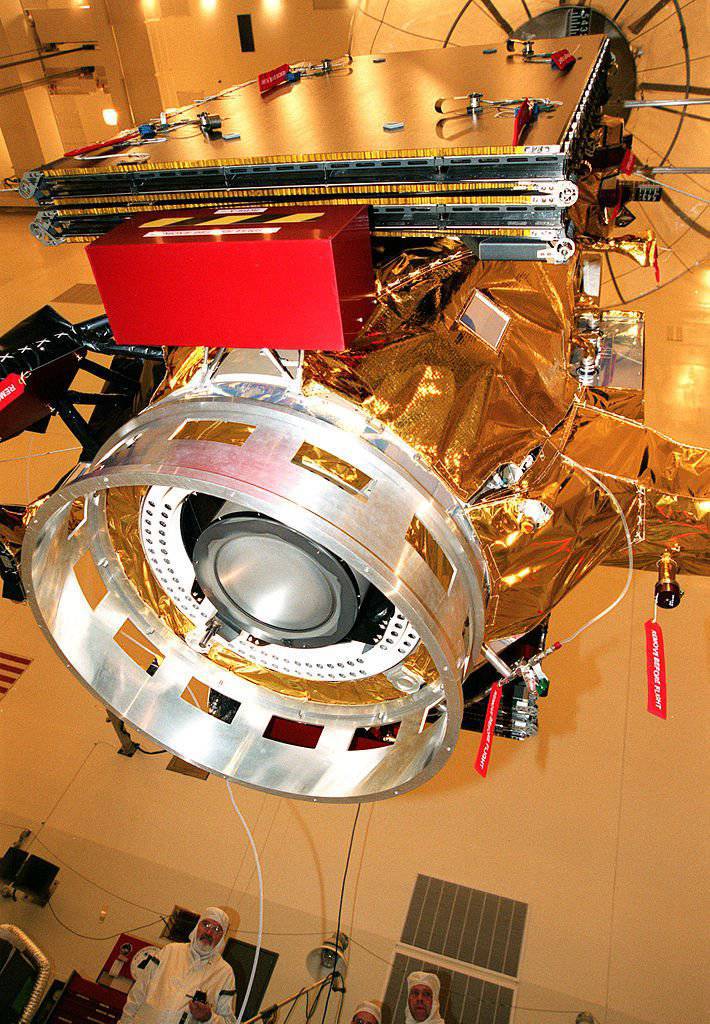
In 1998, NASA had already experimented with an ionic power plant aboard the Deep Space-1 spacecraft. In 2003, the Japanese Hayabusa probe, also equipped with an ion engine, went to the Itokawa asteroid. Whether the future Russian probe will receive a similar engine - time will tell. In principle, the distance to Jupiter is not as great as, for example, to Pluto, because the main problem lies in ensuring the reliability of the probe equipment and its protection from the cold and flows of cosmic particles. Hopefully, Russian science will cope with a difficult task.
The third key problem on the way to distant worlds sounds brief and concise: Communication!
Ensuring a stable connection with the interplanetary station - this question is not inferior in complexity to the construction of the “Tower of Babel”. For example, the Voyager-2 interplanetary probe, which in August 2012 left the probe of the Solar System and is now floating in interstellar space, is heading towards Sirius, which will reach Earth years through 296 000. At the moment, Voyager 2 is 15 billion kilometers from Earth, the power of the interplanetary probe transmitter is 23 W (like a light bulb in your refrigerator). Many of you shake your head in disbelief - consider the dim light of an 23-watt light bulb from a distance of 15 billion kilometers ... this is impossible.
For comparison: to overcome the distance 15 billion km, you need to continuously drive a car at a speed of 100 km / h for 17 thousands of years. Now look back and try to see the light of the refrigerator light at the beginning of the path.
However, NASA engineers regularly retrieve telemetry data from the probe at 160 bit / s. The signal of the Voyager-2 transmitter after the 14-hour delay reaches the Earth with energy 0,3 billionths of a trillionth of watt! And this is quite enough - 70-meter antennas of NASA's far-space communications nodes in the USA, Australia and Spain confidently receive and decode the signals of space wanderers. Another frightening comparison: the energy of the radio emission of stars, adopted for the entire existence of cosmic radio astronomy, is not enough to heat a glass of water at least a millionth of a degree! The sensitivity of these devices is simply amazing. And if a distant interplanetary probe correctly selects a frequency and orients its antenna towards the Earth, it will certainly be heard.
Unfortunately, there are no ground infrastructure for remote space communications in Russia. The complex ADU-1000 “Pluto” (built in 1960 year, Evpatoria, Crimea) is able to provide stable communication with spacecraft at a distance of no more than 300 million kilometers - this is enough for communication with Venus and Mars, but too little when flying to “external the planets. "
However, the lack of the necessary ground equipment should not become an obstacle for Roscosmos - to communicate with the device in Jupiter orbit, powerful NASA antennas will be used. Still, the international status of the project requires ...
Finally, why was Ganymede chosen for research, and not Europe, which was more promising in terms of searching for the subglacial ocean? Especially since the project was originally designated as "Europe-P". What made Russian scientists reconsider their intentions?
The answer is simple and, to some extent, unpleasant. Indeed, it was originally intended to land on the surface of Europe.
In this case, one of the key conditions was the protection of the spacecraft from the effects of the Jupiter radiation belts. And this is not a far-fetched warning — the interplanetary station Galileo, which came out in 1995 on the orbit of Jupiter, received 25 lethal radiation doses to humans at the first orbit. The station was saved only by effective radiation protection.
Currently, NASA has the necessary technologies for radiation protection and shielding of spacecraft equipment, but, alas, the Pentagon has banned the transfer of technical secrets to the Russian side.
We had to urgently change the route - instead of Europe, Ganymede was chosen, located at a distance of 1 million km from Jupiter. Closer to the planet would be dangerous.
Small photo gallery:
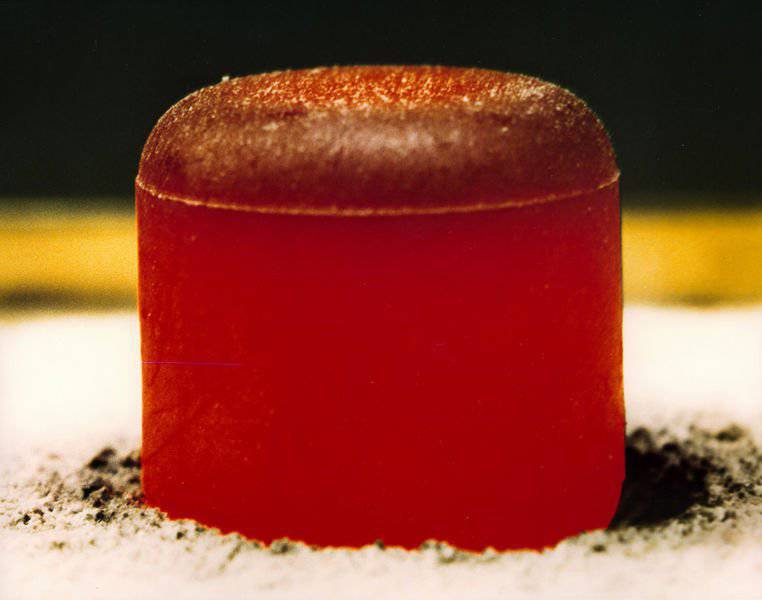
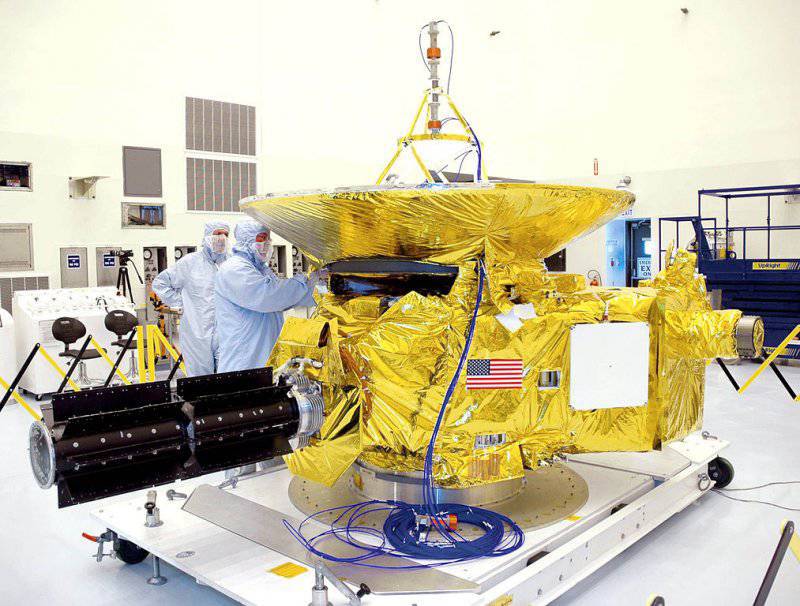
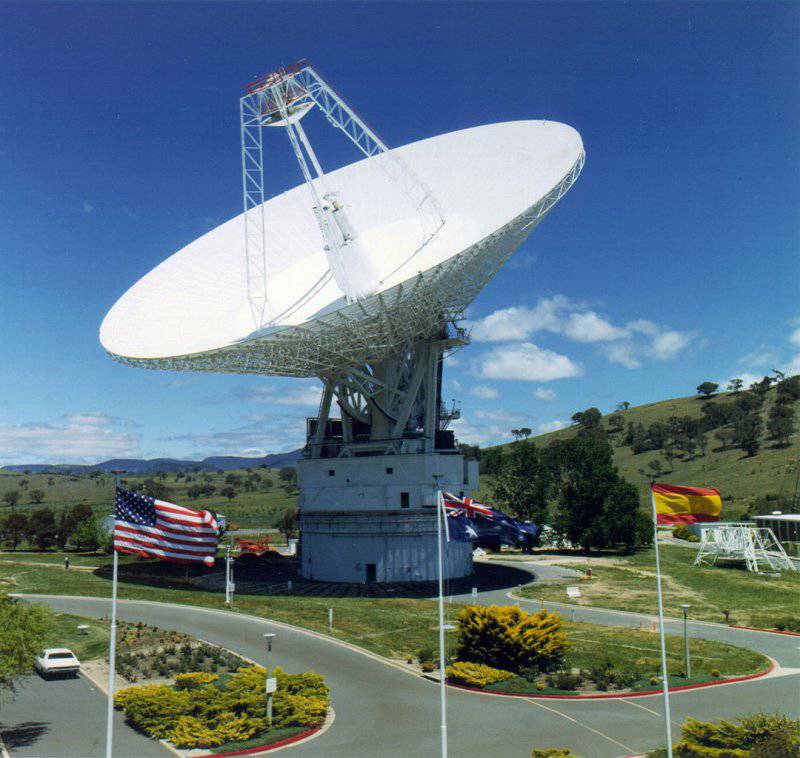
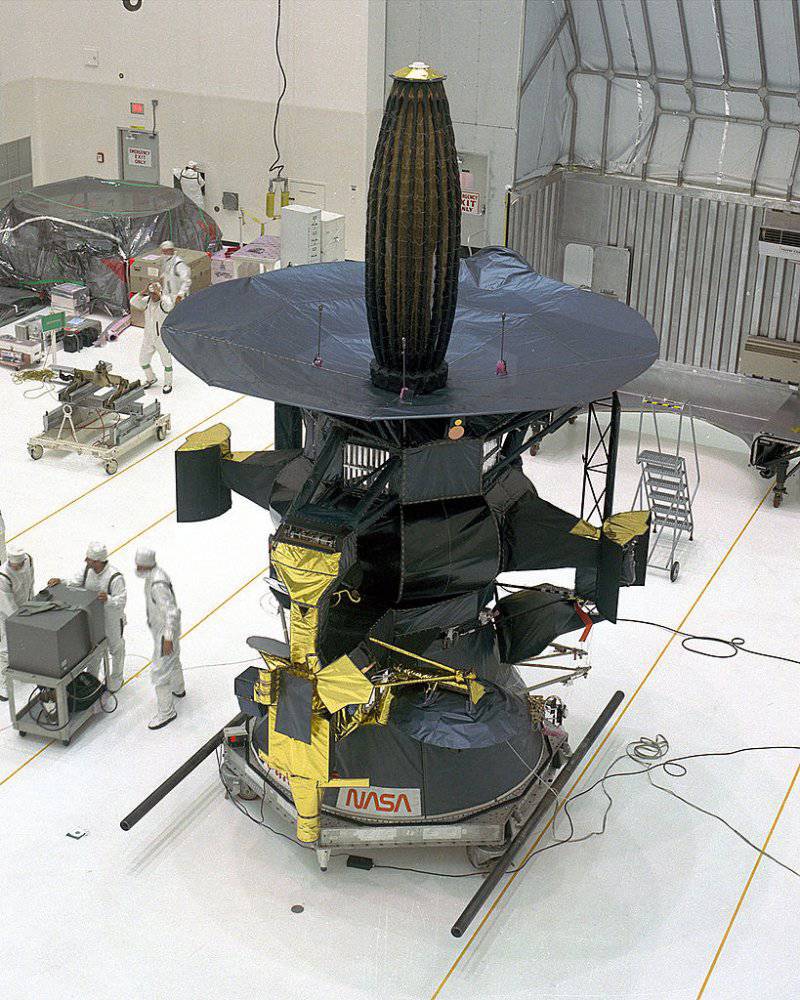
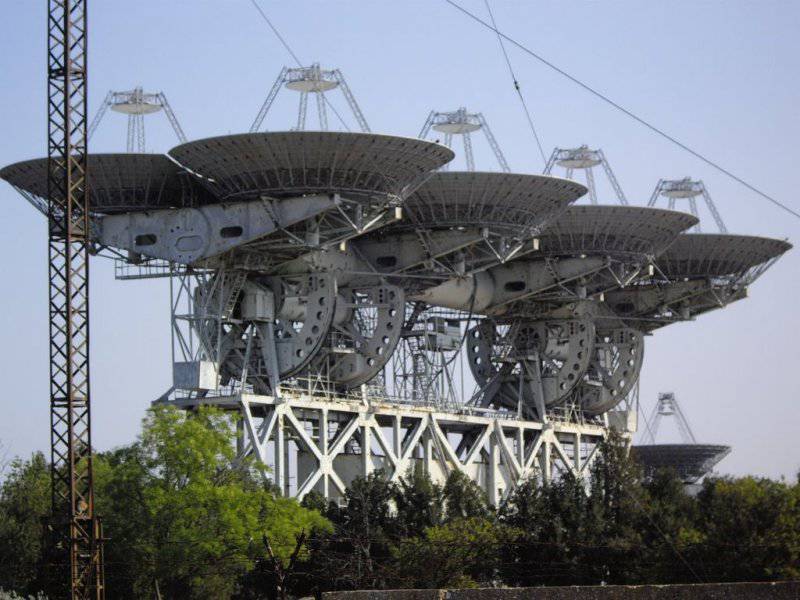
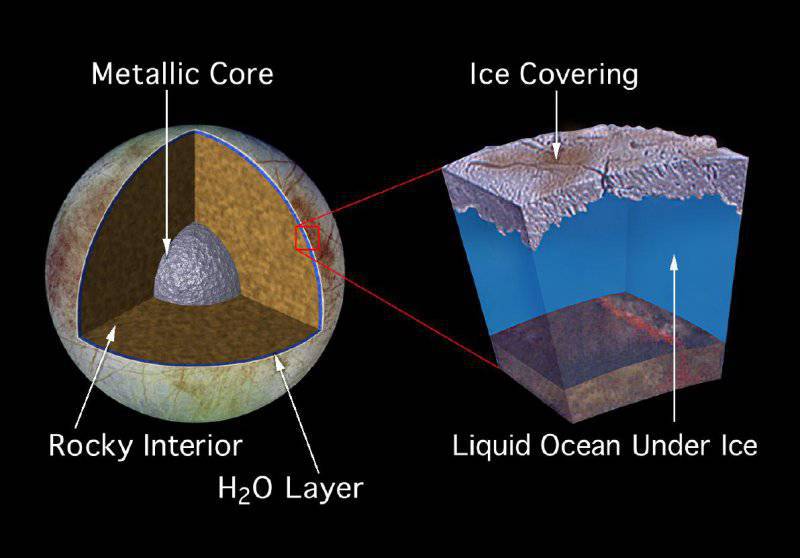
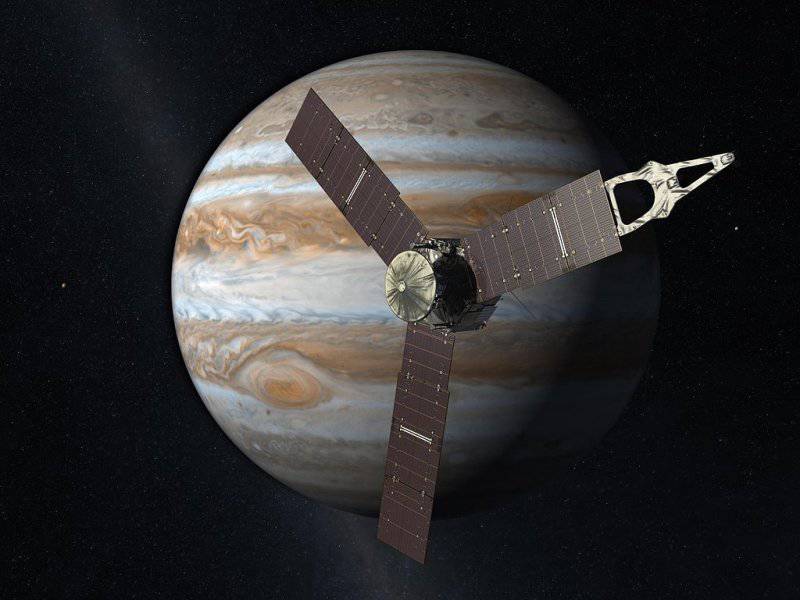

Information